Companion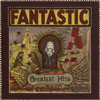 This album is a true oddity even by outsider music, vanity-pressstandards. Recorded and released in 1974 by Charlie Tweddle, a Kentuckynative and metaphysical haberdasher, the album encompassesintrospective Dylanesque folk, Appalachian music, psychedelia, fieldrecordings and radical tape experimentation. Tweddle was an art-schooldropout and an ex-member of Kansas City garage band The Prophets ofParadise when he decided to embark on a three-year lysergic tourthrough Haight-Ashbury. When he returned, his head still full of acid,he became convinced that he was a real life prophet with the mission ofbringing his peculiar brand of primitive hillbilly concrete psych tothe world. And so he got together with six guys that look like extrasfrom The Texas Chainsaw Massacre and recorded an LP combining hisoff-kilter songwriting with sudden, frightening excursions intoalarmingly atmospheric tape music. He dubbed the prophet part ofhimself Eilrahc Elddewt (Charlie Tweddle backwards) and wrote someastoundingly boastful liner notes: "Eilrahc is to music what Christ isto religion. This album will reach into the dustbins of your mind." Thealbum definitely reaches into something, but it's not my mind, it's adeep toybox of warped, drug-addled insanity. The opening track soundsinnocuous enough, a low-fidelity recording of a Dylan-influenced folksong, but soon there are strange things afoot: odd time signatures,strange tape effects, weird percussion. The second track, which I willcall "Hot Tamales" (all eight tracks are untitled), takes a jauntyTex-Mex tune and distorts it with sudden launches of time-compressedmariachi music. On track four, Tweddle and his pals perform aprimitive, ramshackle rendition of the gospel standard "This World IsNot My Home" (Incredible String Fans take note), adding a soundtrack ofchirping crickets to the background. Tweddle's obsession with UFOsreaches a nightmarish zenith on track six, which distorts fieldrecordings of seagulls into a menacing alien noise, while Tweddlenarrates his close encounter story: "In the darkness of the night, alight came dropping from above...The ship was landing on the shore/Andcoming from the ship...three creatures pointed to the sea...as youenter from beneath the ship, the figures follow you/It was a night oflove/You stood gazing into the eyes of your future/As the sea sang thesong with no words." The lysergic vocal mutations are dizzying, andadding to the confusion, Tweddle's narration competes with a recordingof himself playing "Blue Bonnet Lane." I figured that was about asstrange as this album could get, until I reached track eight, which isa 22-minute field recording of crickets chirping on a still, peacefulcountry night, as music plays in a far distant background. It's anabsolutely haunting end to one of the most idiosyncratic non-Jandekworks of outsider music I've ever heard. Companion Records does a greatjob with reissuing a record that was previously only available to themost diligent flea market crate diggers, adding six bonus tracks ofequally inventive music by Tweddle and retaining the original design ofthe packaging. Just when I think it's safe to be completely jaded anddisillusioned by the glut of over-hyped reissues of vinyl artifacts,along comes an album like Fantastic Greatest Hits, forcing me to wonder what other bits of unhinged genius might be hiding out there in history's dustbin.
This album is a true oddity even by outsider music, vanity-pressstandards. Recorded and released in 1974 by Charlie Tweddle, a Kentuckynative and metaphysical haberdasher, the album encompassesintrospective Dylanesque folk, Appalachian music, psychedelia, fieldrecordings and radical tape experimentation. Tweddle was an art-schooldropout and an ex-member of Kansas City garage band The Prophets ofParadise when he decided to embark on a three-year lysergic tourthrough Haight-Ashbury. When he returned, his head still full of acid,he became convinced that he was a real life prophet with the mission ofbringing his peculiar brand of primitive hillbilly concrete psych tothe world. And so he got together with six guys that look like extrasfrom The Texas Chainsaw Massacre and recorded an LP combining hisoff-kilter songwriting with sudden, frightening excursions intoalarmingly atmospheric tape music. He dubbed the prophet part ofhimself Eilrahc Elddewt (Charlie Tweddle backwards) and wrote someastoundingly boastful liner notes: "Eilrahc is to music what Christ isto religion. This album will reach into the dustbins of your mind." Thealbum definitely reaches into something, but it's not my mind, it's adeep toybox of warped, drug-addled insanity. The opening track soundsinnocuous enough, a low-fidelity recording of a Dylan-influenced folksong, but soon there are strange things afoot: odd time signatures,strange tape effects, weird percussion. The second track, which I willcall "Hot Tamales" (all eight tracks are untitled), takes a jauntyTex-Mex tune and distorts it with sudden launches of time-compressedmariachi music. On track four, Tweddle and his pals perform aprimitive, ramshackle rendition of the gospel standard "This World IsNot My Home" (Incredible String Fans take note), adding a soundtrack ofchirping crickets to the background. Tweddle's obsession with UFOsreaches a nightmarish zenith on track six, which distorts fieldrecordings of seagulls into a menacing alien noise, while Tweddlenarrates his close encounter story: "In the darkness of the night, alight came dropping from above...The ship was landing on the shore/Andcoming from the ship...three creatures pointed to the sea...as youenter from beneath the ship, the figures follow you/It was a night oflove/You stood gazing into the eyes of your future/As the sea sang thesong with no words." The lysergic vocal mutations are dizzying, andadding to the confusion, Tweddle's narration competes with a recordingof himself playing "Blue Bonnet Lane." I figured that was about asstrange as this album could get, until I reached track eight, which isa 22-minute field recording of crickets chirping on a still, peacefulcountry night, as music plays in a far distant background. It's anabsolutely haunting end to one of the most idiosyncratic non-Jandekworks of outsider music I've ever heard. Companion Records does a greatjob with reissuing a record that was previously only available to themost diligent flea market crate diggers, adding six bonus tracks ofequally inventive music by Tweddle and retaining the original design ofthe packaging. Just when I think it's safe to be completely jaded anddisillusioned by the glut of over-hyped reissues of vinyl artifacts,along comes an album like Fantastic Greatest Hits, forcing me to wonder what other bits of unhinged genius might be hiding out there in history's dustbin.
samples:


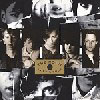 The Room thrived in the late 1980s and embraced a variety of sounds:British new wave, jangle pop, alt-pop, and others. One of the hallmarksof the original In Evil HourLP was that it was originally produced by Tom Verlaine but this onlyprovides a minor understanding of the disparate sounds contained. Theopener, "A Shirt Of Fire," sparks the album with a panoply of layeredand melodic guitar lines and breathy vocals. The chorus of the songconcludes each time with an utterly compelling tempo change,transitioning from a brisk sprint to a deliberate and contemplativewaltz, guitars all the while mimicking the pace. After the downshift,the song then collects itself back into the original tempo with anascending wall of frantically-strummed guitar. "A Shirt Of Fire"instantly recalls bands like Echo and the Bunnymen and The Chameleons.The similarities persist throughout the album, as well. Signaturebreathy vocals, the angularity of the guitars, and imploring lyrics areall distinctly Echoey and Bunnyish at the same time. Perhaps thepremier song on this collection is the tingly "New Dreams For Old." Thesong is prudently represented twice, once as the original album cut andthen as a version featuring horns from a 7-inch release. Both times, itis impossible to deny the brilliance of the song. The first 20 secondsare enough to turn heads: a shimmery guitar intro is swept up by anorgan almost too soon and sure enough everything else thereafter fallsinto place. The rest is pure Brit-pop, reminiscent of Britain's finestlabels who peddled such sounds: Sarah, Creation, 53rd + 3rd, Subway. Onthe contrary, the worst moments come when The Room acquiesce to atemptation which corrupted many of their Brit-pop contemporaries. Theintroduction of lounge music into indie Brit-pop was a truly abhorrentdevelopment which cauterized some unlucky alt-pop bands, largelyBritish, in the late 1980s and early 1990s—and it wasn't just Brit-popwhich suffered under this detestable hybridization. By the mid 1990s,trip-hop, acid jazz, and a host of other musical subgenres popped upwhich had lounge music as their root evil. Even hermetic hip-hop had aperhaps less noxious flirtation with lounge, seen in bands like DigablePlanets. Along those same lines, The Room were not savvy enough toresist the urge of lounge music in some of their compositions. Songslike "Numb" and "Never" are Bossa Novean belchings which sound likesomething Getz and Gilberto might have coughed up in their bettermoments. It could be that The Room were merely partaking in thatuniversal pastime to which all bands are eventually drawn, what mostwill call "growing as a band and maturing musically." Generally, thisis just obfuscation for an unfortunate divergence from a well-honedsound in favor of a less-palateable direction. Such is the case here.Thankfully, the lounginess tends to pop up only in the later material,songs which were taken from the Clear! EP. Intermingled withthese rather disappointing cuts are crisper songs which areunassailably new wave ("The Ride," for instance) and have a much easiertime meshing with the overall sound of The Room. In the end, the powerof the jangle and synthesizers is largely able to dissipate all that issmoky, jazzy, and upholstered with plush red velvet from The Room.
The Room thrived in the late 1980s and embraced a variety of sounds:British new wave, jangle pop, alt-pop, and others. One of the hallmarksof the original In Evil HourLP was that it was originally produced by Tom Verlaine but this onlyprovides a minor understanding of the disparate sounds contained. Theopener, "A Shirt Of Fire," sparks the album with a panoply of layeredand melodic guitar lines and breathy vocals. The chorus of the songconcludes each time with an utterly compelling tempo change,transitioning from a brisk sprint to a deliberate and contemplativewaltz, guitars all the while mimicking the pace. After the downshift,the song then collects itself back into the original tempo with anascending wall of frantically-strummed guitar. "A Shirt Of Fire"instantly recalls bands like Echo and the Bunnymen and The Chameleons.The similarities persist throughout the album, as well. Signaturebreathy vocals, the angularity of the guitars, and imploring lyrics areall distinctly Echoey and Bunnyish at the same time. Perhaps thepremier song on this collection is the tingly "New Dreams For Old." Thesong is prudently represented twice, once as the original album cut andthen as a version featuring horns from a 7-inch release. Both times, itis impossible to deny the brilliance of the song. The first 20 secondsare enough to turn heads: a shimmery guitar intro is swept up by anorgan almost too soon and sure enough everything else thereafter fallsinto place. The rest is pure Brit-pop, reminiscent of Britain's finestlabels who peddled such sounds: Sarah, Creation, 53rd + 3rd, Subway. Onthe contrary, the worst moments come when The Room acquiesce to atemptation which corrupted many of their Brit-pop contemporaries. Theintroduction of lounge music into indie Brit-pop was a truly abhorrentdevelopment which cauterized some unlucky alt-pop bands, largelyBritish, in the late 1980s and early 1990s—and it wasn't just Brit-popwhich suffered under this detestable hybridization. By the mid 1990s,trip-hop, acid jazz, and a host of other musical subgenres popped upwhich had lounge music as their root evil. Even hermetic hip-hop had aperhaps less noxious flirtation with lounge, seen in bands like DigablePlanets. Along those same lines, The Room were not savvy enough toresist the urge of lounge music in some of their compositions. Songslike "Numb" and "Never" are Bossa Novean belchings which sound likesomething Getz and Gilberto might have coughed up in their bettermoments. It could be that The Room were merely partaking in thatuniversal pastime to which all bands are eventually drawn, what mostwill call "growing as a band and maturing musically." Generally, thisis just obfuscation for an unfortunate divergence from a well-honedsound in favor of a less-palateable direction. Such is the case here.Thankfully, the lounginess tends to pop up only in the later material,songs which were taken from the Clear! EP. Intermingled withthese rather disappointing cuts are crisper songs which areunassailably new wave ("The Ride," for instance) and have a much easiertime meshing with the overall sound of The Room. In the end, the powerof the jangle and synthesizers is largely able to dissipate all that issmoky, jazzy, and upholstered with plush red velvet from The Room. As part of Ze Records' ongoing excavation of their extensive backcatalog, they have recently reissued two albums by Cristina, theinternationally ignored disco superstar should-have-been but never-was.Cristina Monet was born into opulence and wealth, attending Harvard andLondon's School of Drama, floating freely between flats in London,Paris and New York City. In 1978, while working at a theater critic forthe Village Voice,she met her future husband and founder of Ze Records Michael Zelkha.Zelkha was itching to get into the NYC underground punk/disco scenes,so they recorded a single called "Disco Clone," an incisive, ifirritating satire of disco culture for which they enlisted theproduction talents of John Cale and hilariously corny vocal narrationby actor Kevin Kline. Thankfully, the music improved by leaps andbounds by the time Cristina was recording her debut full-length Doll in the Box,but "Disco Clone" pretty much established Cristina's modus operandi:sleek, downtown Studio 54 jams with Cristina's haughty, detached,Brechtian vocal style; demonstrating her cool disillusionment withnightclubs full of "bored-looking bankers dancing with beautifulmodels." That early single is included as a bonus track on thisreissue, along with some other early singles and the entire AugustDarnell-produced debut. Darnell was soon to unveil his Latino-flavoredmutant disco ensemble Kid Creole and the Coconuts, and much of thatinfluence is evident on Doll in a Box, with heavy-handedAfrican and Latin rhythms, Caribbean overtones and a jaunty brasssection. Check out the African tribal chanting that forms the basis of"Jungle Love" for a laugh. Listening to this material more than 20years later, it can't help but sound somewhat dated, suffering fromaging problems that Cristina's contemporaries (and labelmates) such asWas (Not Was) and the Aural Exciters were able to sidestep. Most ofCristina's appeal lay in her sarcastic, world-weary vocals, soundingyears beyond her actual age. However, for much of Doll in the Box,those amazing vocals are overwhelmed with an overactive, technicolorproduction that wears a thin after a few listens. The singles are muchbetter, with the aforementioned "Disco Clone" presented alongsidehilariously witty covers of Peggy Lee's Lieber and Stoller-penned "IsThat All There Is?" and The Beatles "Drive My Car." On the latter,Cristina alters the lyrics of the Lee classic into a darkly humorousmonologue set against incongruously bubbly music: "And then I fell inlove with the most wonderful boy in Manhattan...we'd take longs walksdown by the river and he'd beat me black and blue and I loved it." Doll in a Boxis very far from a lost classic, but the inclusion of Cristina'sclassic early 12" singles more than makes up for its shortcomings.
As part of Ze Records' ongoing excavation of their extensive backcatalog, they have recently reissued two albums by Cristina, theinternationally ignored disco superstar should-have-been but never-was.Cristina Monet was born into opulence and wealth, attending Harvard andLondon's School of Drama, floating freely between flats in London,Paris and New York City. In 1978, while working at a theater critic forthe Village Voice,she met her future husband and founder of Ze Records Michael Zelkha.Zelkha was itching to get into the NYC underground punk/disco scenes,so they recorded a single called "Disco Clone," an incisive, ifirritating satire of disco culture for which they enlisted theproduction talents of John Cale and hilariously corny vocal narrationby actor Kevin Kline. Thankfully, the music improved by leaps andbounds by the time Cristina was recording her debut full-length Doll in the Box,but "Disco Clone" pretty much established Cristina's modus operandi:sleek, downtown Studio 54 jams with Cristina's haughty, detached,Brechtian vocal style; demonstrating her cool disillusionment withnightclubs full of "bored-looking bankers dancing with beautifulmodels." That early single is included as a bonus track on thisreissue, along with some other early singles and the entire AugustDarnell-produced debut. Darnell was soon to unveil his Latino-flavoredmutant disco ensemble Kid Creole and the Coconuts, and much of thatinfluence is evident on Doll in a Box, with heavy-handedAfrican and Latin rhythms, Caribbean overtones and a jaunty brasssection. Check out the African tribal chanting that forms the basis of"Jungle Love" for a laugh. Listening to this material more than 20years later, it can't help but sound somewhat dated, suffering fromaging problems that Cristina's contemporaries (and labelmates) such asWas (Not Was) and the Aural Exciters were able to sidestep. Most ofCristina's appeal lay in her sarcastic, world-weary vocals, soundingyears beyond her actual age. However, for much of Doll in the Box,those amazing vocals are overwhelmed with an overactive, technicolorproduction that wears a thin after a few listens. The singles are muchbetter, with the aforementioned "Disco Clone" presented alongsidehilariously witty covers of Peggy Lee's Lieber and Stoller-penned "IsThat All There Is?" and The Beatles "Drive My Car." On the latter,Cristina alters the lyrics of the Lee classic into a darkly humorousmonologue set against incongruously bubbly music: "And then I fell inlove with the most wonderful boy in Manhattan...we'd take longs walksdown by the river and he'd beat me black and blue and I loved it." Doll in a Boxis very far from a lost classic, but the inclusion of Cristina'sclassic early 12" singles more than makes up for its shortcomings. For her 1984 follow-up, Cristina enlisted the production genius of DonWas, who brings to Cristina's vocals a musical backdrop every bit asbizarre and infectious as his own Ze Records project Was (Not Was).Forgoing the extended disco excursions of her debut, Cristina and Wasinstead created ten radio-ready pop songs, trying to outdo Madonna ather own game, perhaps. Along with originals penned by the singerherself in conjunction with Was, Doug Fieger (of The Kinks) and RobertPalmer (!), Cristina also performs distinctive covers of songs by VanMorrison, Prince and obscure country singer John Conlee. The albumfeatures excellent guest contributions from contorted punk saxophonistJames Chance and jazz legend Marcus Belgrave. With all this star power,I partially expected Sleep It Offto sound like smooth, competent 1980s new wave pop. Well, it doesn'tsound like that at all, but what it does sound like is harder to naildown. Producer Was adds stacks of keyboards and synthesizers, wackyloops and sound effects, creating a densely populated architecture ofsound that at times threatens to steal the show from Cristina's vocals.Perhaps in order to cement the Brecht comparison, Cristina andcollaborator Ben Brierly perform a gothic-y cover of Bertolt Brecht andKurt Weil's classic ode to purchased love "Ballad of Immoral Earnings."With some of the tracks recalling the sophisticated disco of her earlysingles, and some taking utterly bizarre tangents into electro-Country("She Can't Say That Anymore") and cheesy 1980s pop balladry ("The Lieof Love"), the overall effect of Sleep It Off is pureeclecticism. As such, it never becomes boring, although it does lack acertain focus, which probably explains the public's indifference to thealbum at the time of its release. The lack of any obvious single normalenough for radio airplay probably also contributed. "Don't Mutilate MyMink" gleefully rips off the Sex Pistols' "Anarchy in the UK," for oneof the album's funniest, most confrontational tracks. Bonus tracksinclude horrible session outtakes, a bizarre Christmas song, and areally nifty cover of Prince's classic "When You Were Mine." Sleep It Offis an interesting mess, one I don't think I'll be returning to any timesoon, but that I am nonetheless glad has received the deluxe reissuetreatment from Ze.
For her 1984 follow-up, Cristina enlisted the production genius of DonWas, who brings to Cristina's vocals a musical backdrop every bit asbizarre and infectious as his own Ze Records project Was (Not Was).Forgoing the extended disco excursions of her debut, Cristina and Wasinstead created ten radio-ready pop songs, trying to outdo Madonna ather own game, perhaps. Along with originals penned by the singerherself in conjunction with Was, Doug Fieger (of The Kinks) and RobertPalmer (!), Cristina also performs distinctive covers of songs by VanMorrison, Prince and obscure country singer John Conlee. The albumfeatures excellent guest contributions from contorted punk saxophonistJames Chance and jazz legend Marcus Belgrave. With all this star power,I partially expected Sleep It Offto sound like smooth, competent 1980s new wave pop. Well, it doesn'tsound like that at all, but what it does sound like is harder to naildown. Producer Was adds stacks of keyboards and synthesizers, wackyloops and sound effects, creating a densely populated architecture ofsound that at times threatens to steal the show from Cristina's vocals.Perhaps in order to cement the Brecht comparison, Cristina andcollaborator Ben Brierly perform a gothic-y cover of Bertolt Brecht andKurt Weil's classic ode to purchased love "Ballad of Immoral Earnings."With some of the tracks recalling the sophisticated disco of her earlysingles, and some taking utterly bizarre tangents into electro-Country("She Can't Say That Anymore") and cheesy 1980s pop balladry ("The Lieof Love"), the overall effect of Sleep It Off is pureeclecticism. As such, it never becomes boring, although it does lack acertain focus, which probably explains the public's indifference to thealbum at the time of its release. The lack of any obvious single normalenough for radio airplay probably also contributed. "Don't Mutilate MyMink" gleefully rips off the Sex Pistols' "Anarchy in the UK," for oneof the album's funniest, most confrontational tracks. Bonus tracksinclude horrible session outtakes, a bizarre Christmas song, and areally nifty cover of Prince's classic "When You Were Mine." Sleep It Offis an interesting mess, one I don't think I'll be returning to any timesoon, but that I am nonetheless glad has received the deluxe reissuetreatment from Ze. While the debut solo CD by Volker Kahl of German duo Beefcake runs thegamut of electronic styles, the album is a unified, enjoyable listen.Through 60 minutes, styles move from breakcore to sweeping ambientsoundscapes to melodic electronica, but by naming the tracks "Place1"through "Place11" he adheres to the concept of travel. Thejuxtaposition of moods from track to track makes Placesfeel like an actual journey. "Place1" recalls a city environment, withits quick tempo invoking the fast-paced nature of urban life. "Place2"features cut-up voices and rapid-fire beats, and contrasts sharply withthe orchestral "Place3," during which an eerie narrator asks to "listenfor my voice. I will tell you what to do". With this track Kattoocreates a sweeping, epic sound that resembles a landscape seen whilesoaring high above. The combination of excellent source material andskillful production make "Place4" a stand-out track. Here he pits heavymetal guitar riffs against intricately programmed live drumming, withswirling ambience lingering in the background. "Place5" is a melloweraffair, and recalls Kahl's work with Beefcake in that it featuressoulful, albeit manipulated, vocals. The sedate, melodic quality ofthis track balances the heavy beat-oriented "Place6" which follows it.The only part of the set that loses me is the closing seven minute"Place11," which consists solely of a man speaking in German. If he hadmade this kind of piece as a link track it would have been lessdisruptive to the flow of the album. Since I don't understand German,the importance of the text is lost on me, although at one point he sayssomething about President Roosevelt. The addition of a remix of"Place7" by Flaque after this monologue is a welcome return to music,with tinkly beats and synthesizer washes interspersed with recordingsof a roomful of people talking. Although the landscape photographs onthe sleeve are appropriate for the theme, it is surprising that theusually inventive graphic designer Salt has used a layout that soclosely resembles that of the Azure Skies CD from 2001, which alsodepicts landscapes on its cover.
While the debut solo CD by Volker Kahl of German duo Beefcake runs thegamut of electronic styles, the album is a unified, enjoyable listen.Through 60 minutes, styles move from breakcore to sweeping ambientsoundscapes to melodic electronica, but by naming the tracks "Place1"through "Place11" he adheres to the concept of travel. Thejuxtaposition of moods from track to track makes Placesfeel like an actual journey. "Place1" recalls a city environment, withits quick tempo invoking the fast-paced nature of urban life. "Place2"features cut-up voices and rapid-fire beats, and contrasts sharply withthe orchestral "Place3," during which an eerie narrator asks to "listenfor my voice. I will tell you what to do". With this track Kattoocreates a sweeping, epic sound that resembles a landscape seen whilesoaring high above. The combination of excellent source material andskillful production make "Place4" a stand-out track. Here he pits heavymetal guitar riffs against intricately programmed live drumming, withswirling ambience lingering in the background. "Place5" is a melloweraffair, and recalls Kahl's work with Beefcake in that it featuressoulful, albeit manipulated, vocals. The sedate, melodic quality ofthis track balances the heavy beat-oriented "Place6" which follows it.The only part of the set that loses me is the closing seven minute"Place11," which consists solely of a man speaking in German. If he hadmade this kind of piece as a link track it would have been lessdisruptive to the flow of the album. Since I don't understand German,the importance of the text is lost on me, although at one point he sayssomething about President Roosevelt. The addition of a remix of"Place7" by Flaque after this monologue is a welcome return to music,with tinkly beats and synthesizer washes interspersed with recordingsof a roomful of people talking. Although the landscape photographs onthe sleeve are appropriate for the theme, it is surprising that theusually inventive graphic designer Salt has used a layout that soclosely resembles that of the Azure Skies CD from 2001, which alsodepicts landscapes on its cover. Aubrey Anderson takes things back to basics on his latest album for anew label, after some critical upset following his sophomore LP. Sadly,even though the methods are the same as his debut, the disappointmentcontinues on par with its follow-up, as the songs and vocalperformances rarely escape radio-friendly safe pop territory. Andersonis no doubt a talented musician, arranger, and producer, exhibiting agreat deal of self-motivation and a strong work ethic. He's even shownsparks of breaking out with a massive and timeless record, either inDifference Engine or on his own. The sparks have never caught into theraging inferno and they merely pop and fizzle on these songs. Maybeit's the Jack Johnson-like photos that make up the digipak packaging,but there's a general feeling of "check out this new artist who has alot of emotional things to say" that seeps out of every pore. It's likethe anxiety to try out some bold flavors in a cereal, only to open thebox and find that nearly half is air. The opening track starts thistrend: following two verses and roughly three minutes of music, "TheLong Hot July" continues for another minute and a half of the samerefrain and gentle almost-moan. It's unneeded, as though Andersonthought the track wasn't long enough, so just dragged it out to filltime. His vocal delivery is very much that of the sensitivesinger-songwriter mold, and the melodies are all bittersweet happiness,as though it didn't work out as planned but a certain rolling with thepunches will be a growth experience. Not that it's all a waste, ascertain songs — "San Francisco" or "Panic and Doubt" — have moments ofgrand adventure, like chilling harmonies and squelched guitars or oddinstrumentation. For the most part, though, the lyrics are pedestrianand to be avoided (talks of Tarantino matinees and being around afriend's house at sixteen are not terribly interesting); and the songsveer into the bland and formulaic, like the title track, or even worse"Summer Time." This is touted as the "true voice" of Aubrey Anderson,but I doubt that's true. With the hints he's provided in the past, I'dthink his true voice would be far more sensational. If the best momentsof this CD were expounded upon, perhaps that's what will come out.
Aubrey Anderson takes things back to basics on his latest album for anew label, after some critical upset following his sophomore LP. Sadly,even though the methods are the same as his debut, the disappointmentcontinues on par with its follow-up, as the songs and vocalperformances rarely escape radio-friendly safe pop territory. Andersonis no doubt a talented musician, arranger, and producer, exhibiting agreat deal of self-motivation and a strong work ethic. He's even shownsparks of breaking out with a massive and timeless record, either inDifference Engine or on his own. The sparks have never caught into theraging inferno and they merely pop and fizzle on these songs. Maybeit's the Jack Johnson-like photos that make up the digipak packaging,but there's a general feeling of "check out this new artist who has alot of emotional things to say" that seeps out of every pore. It's likethe anxiety to try out some bold flavors in a cereal, only to open thebox and find that nearly half is air. The opening track starts thistrend: following two verses and roughly three minutes of music, "TheLong Hot July" continues for another minute and a half of the samerefrain and gentle almost-moan. It's unneeded, as though Andersonthought the track wasn't long enough, so just dragged it out to filltime. His vocal delivery is very much that of the sensitivesinger-songwriter mold, and the melodies are all bittersweet happiness,as though it didn't work out as planned but a certain rolling with thepunches will be a growth experience. Not that it's all a waste, ascertain songs — "San Francisco" or "Panic and Doubt" — have moments ofgrand adventure, like chilling harmonies and squelched guitars or oddinstrumentation. For the most part, though, the lyrics are pedestrianand to be avoided (talks of Tarantino matinees and being around afriend's house at sixteen are not terribly interesting); and the songsveer into the bland and formulaic, like the title track, or even worse"Summer Time." This is touted as the "true voice" of Aubrey Anderson,but I doubt that's true. With the hints he's provided in the past, I'dthink his true voice would be far more sensational. If the best momentsof this CD were expounded upon, perhaps that's what will come out.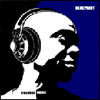 For a recording artist, the release of their first solo album—afternumerous guest appearances or group releases—ranks high on the list ofrights of passage, up there with other crucial, life changing or lifeaffirming events: a bar mitzvah, loss of virginity, or your firstkidney stone. Unfortunately for veteran hip hopper Blueprint (Columbus,OH native Albert Shepard), Chamber Musicis more like the latter than any other milestones. It's labored andpainful, there's no idea what caused it, and it's relieving when over.It's especially frustrating and disappointing when considering thatShepard, a former computer programmer and systems analyst, has receivednearly universal acclaim on the underground circuit as an MC, mostnotably for his Soul Position project. With RJD2's unique productionstyle mated to Blueprint's rhyming style—cerebral and challenging oneminute, flowing raunchy and handing out disses the next—Soul Positiongarnered nothing but well-deserved respect for the duo. On Chamber MusicBlueprint takes a complete 180, choosing to abandon the mic for theproducer's studio. While it's not completely unfamiliar territory—hehas produced tracks for Illogic and others before—it's not his strongsuit, a fact that becomes painfully obvious deep into Chamber Music'spoorly conceived sixty minutes. The obligatory guest MC appearancesinclude Aesop Rock, Illogic, and Cannibal Ox's Vast Aire all takingturns, and Blueprint himself isn't totally silent, providing a fewverses on "Mr Hyde." Eight instrumental tracks remain, proving to besimply too much time for Blueprint to fill with anything of interest oreven quality. Most of the record's sound can best be described as thebackground music to a hip-hop themed Spooky World. Blueprint createsdark, barren four part sonic landscapes that meander without reallygetting anywhere, making the listener almost yearn for a party anthemor a holier than thou indictment of the record industry (almost).Usually such sins aren't enough to sink a track, but Blueprint commitssuicide with his sample selection. He of all people must be aware thehigh standard to which loop diggers are held, so it's inexcusable thenfor him to sample what sounds like B-list session musicians or to makean entire track out of a played Richard Pryor routine. The Pryor track,"Hot Sex," is actually one of the album's better tracks, but it'shardly impressive to hear little more than background music for a30-year old joke. That being said, Chamber Music is not withoutits merits. However, they come frustratingly late, as it's not untilthe eleventh track, "Sacrifice," where a mournful piano skittersthrough a blissfully dismal montage of drums, occasionally comforted bya softly wailing flute. It is pretty, poignant, and with a strong bassline, kick, and snare it's actually stompin'. It's too little too late,as on the whole Chamber Music feels like a very dedicated,motivated and intelligent man sat down and did his best with a limitedcollection of run-of-the-mill samples and the latest copy of Pro-Tools.It may work sometimes, but Chamber Music is cold, uninspiringand at times, simply boring. To sit patiently through the entire recordis a challenge; hip hop anathema. It has none of the soft and welcomingorganic familiarity of a Shadow tune, the controlled anarchy of aPrefuse track or the dusty crate-dug accidental genius of a Madlibbeat. Worst of all, Blueprint does show flashes of talent, but they arescattered throughout the album, and diluted by mediocrity so much sothat almost too hard to find to be worthwhile. He may yet produce agem, but with his solo debut Blueprint has put his name on an unhappilyaverage album.
For a recording artist, the release of their first solo album—afternumerous guest appearances or group releases—ranks high on the list ofrights of passage, up there with other crucial, life changing or lifeaffirming events: a bar mitzvah, loss of virginity, or your firstkidney stone. Unfortunately for veteran hip hopper Blueprint (Columbus,OH native Albert Shepard), Chamber Musicis more like the latter than any other milestones. It's labored andpainful, there's no idea what caused it, and it's relieving when over.It's especially frustrating and disappointing when considering thatShepard, a former computer programmer and systems analyst, has receivednearly universal acclaim on the underground circuit as an MC, mostnotably for his Soul Position project. With RJD2's unique productionstyle mated to Blueprint's rhyming style—cerebral and challenging oneminute, flowing raunchy and handing out disses the next—Soul Positiongarnered nothing but well-deserved respect for the duo. On Chamber MusicBlueprint takes a complete 180, choosing to abandon the mic for theproducer's studio. While it's not completely unfamiliar territory—hehas produced tracks for Illogic and others before—it's not his strongsuit, a fact that becomes painfully obvious deep into Chamber Music'spoorly conceived sixty minutes. The obligatory guest MC appearancesinclude Aesop Rock, Illogic, and Cannibal Ox's Vast Aire all takingturns, and Blueprint himself isn't totally silent, providing a fewverses on "Mr Hyde." Eight instrumental tracks remain, proving to besimply too much time for Blueprint to fill with anything of interest oreven quality. Most of the record's sound can best be described as thebackground music to a hip-hop themed Spooky World. Blueprint createsdark, barren four part sonic landscapes that meander without reallygetting anywhere, making the listener almost yearn for a party anthemor a holier than thou indictment of the record industry (almost).Usually such sins aren't enough to sink a track, but Blueprint commitssuicide with his sample selection. He of all people must be aware thehigh standard to which loop diggers are held, so it's inexcusable thenfor him to sample what sounds like B-list session musicians or to makean entire track out of a played Richard Pryor routine. The Pryor track,"Hot Sex," is actually one of the album's better tracks, but it'shardly impressive to hear little more than background music for a30-year old joke. That being said, Chamber Music is not withoutits merits. However, they come frustratingly late, as it's not untilthe eleventh track, "Sacrifice," where a mournful piano skittersthrough a blissfully dismal montage of drums, occasionally comforted bya softly wailing flute. It is pretty, poignant, and with a strong bassline, kick, and snare it's actually stompin'. It's too little too late,as on the whole Chamber Music feels like a very dedicated,motivated and intelligent man sat down and did his best with a limitedcollection of run-of-the-mill samples and the latest copy of Pro-Tools.It may work sometimes, but Chamber Music is cold, uninspiringand at times, simply boring. To sit patiently through the entire recordis a challenge; hip hop anathema. It has none of the soft and welcomingorganic familiarity of a Shadow tune, the controlled anarchy of aPrefuse track or the dusty crate-dug accidental genius of a Madlibbeat. Worst of all, Blueprint does show flashes of talent, but they arescattered throughout the album, and diluted by mediocrity so much sothat almost too hard to find to be worthwhile. He may yet produce agem, but with his solo debut Blueprint has put his name on an unhappilyaverage album. This brief, three-song EP is being released as a spacer to tide fansover until the new Antony and the Johnsons full-length album I Am A Bird Nowis released February of next year. New material from NYC's premieretorch-song singing androgyne is long overdue, the artist not havingreleased any new material since 2002's I Fell In Love With A Dead BoyEP, and no full-length since his superlative 1999 debut on Durtro. Inthese intervening years, Antony's cult of adoration has grownconsiderably, with established NYC artists Lou Reed and his wife LaurieAnderson promoting the artist, playing a number of shows together.Antony has made guest vocal appearances on two of Lou Reed's recentalbums, and he contributes vocals to campy queer troubadour RufusWainwright's most recent album Want Two. It seems that success has agreed with Antony, as the songs and lyrics on The Lakeevidence a decidedly more positive outlook than the depressing songsuite of his first album. According to Antony, "The Horror Has Gone,""That terror was not fright/but a tremulous delight," and "I feel thatheat/And I know it's love." There are no more rivers of sorrow orHitlers in his heart, I suppose. Even despite my usual preference formelancholy, The Lake EP is a terrific little taster, all threesongs showcasing the singer/songwriter/arranger at the very height ofhis craft. The title track will be recognizable to those who have heardthe Current 93/Antony split Live at St. Olave's Church EP, a moving adaptation of Edgar Allan Poe's mysterious lyric poem. I'm not sure if it's a coincidence that Lou Reed's The Raven,a dire concept album about the decadent author, coincided with Antony'sfascination with Poe, but either way it's a beautiful song, though Iprefer slightly the simpler arrangement and vocal style of the earlierlive recording. "Fistful of Love" is the EP's centerpiece: an upbeat,jazzy number about the fear of admitting you're in love in someone. LouReed does a guest vocal spot on the EP, contributing some terse spokenlyrics and electric guitar. It's one of Antony's busiest arrangements,with a full brass section and a distinct rock vibe, but he pulls it offbrilliantly. The final track is the brief, delicate "The Horror HasGone," in which Antony celebrates the passing of a deep depression,playing the piano, accompanied by Julia Kent's beautiful cello. I'vebeen enjoying this EP thoroughly, and it affirms what many peoplealready know: Antony's voice is one of the most amazingly expressiveinstruments around. Those who don't get it, never will; those who loveit, will always come back for more.
This brief, three-song EP is being released as a spacer to tide fansover until the new Antony and the Johnsons full-length album I Am A Bird Nowis released February of next year. New material from NYC's premieretorch-song singing androgyne is long overdue, the artist not havingreleased any new material since 2002's I Fell In Love With A Dead BoyEP, and no full-length since his superlative 1999 debut on Durtro. Inthese intervening years, Antony's cult of adoration has grownconsiderably, with established NYC artists Lou Reed and his wife LaurieAnderson promoting the artist, playing a number of shows together.Antony has made guest vocal appearances on two of Lou Reed's recentalbums, and he contributes vocals to campy queer troubadour RufusWainwright's most recent album Want Two. It seems that success has agreed with Antony, as the songs and lyrics on The Lakeevidence a decidedly more positive outlook than the depressing songsuite of his first album. According to Antony, "The Horror Has Gone,""That terror was not fright/but a tremulous delight," and "I feel thatheat/And I know it's love." There are no more rivers of sorrow orHitlers in his heart, I suppose. Even despite my usual preference formelancholy, The Lake EP is a terrific little taster, all threesongs showcasing the singer/songwriter/arranger at the very height ofhis craft. The title track will be recognizable to those who have heardthe Current 93/Antony split Live at St. Olave's Church EP, a moving adaptation of Edgar Allan Poe's mysterious lyric poem. I'm not sure if it's a coincidence that Lou Reed's The Raven,a dire concept album about the decadent author, coincided with Antony'sfascination with Poe, but either way it's a beautiful song, though Iprefer slightly the simpler arrangement and vocal style of the earlierlive recording. "Fistful of Love" is the EP's centerpiece: an upbeat,jazzy number about the fear of admitting you're in love in someone. LouReed does a guest vocal spot on the EP, contributing some terse spokenlyrics and electric guitar. It's one of Antony's busiest arrangements,with a full brass section and a distinct rock vibe, but he pulls it offbrilliantly. The final track is the brief, delicate "The Horror HasGone," in which Antony celebrates the passing of a deep depression,playing the piano, accompanied by Julia Kent's beautiful cello. I'vebeen enjoying this EP thoroughly, and it affirms what many peoplealready know: Antony's voice is one of the most amazingly expressiveinstruments around. Those who don't get it, never will; those who loveit, will always come back for more.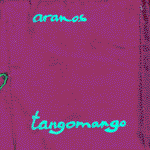 Aranos is a master of the stringed instrument, a frequent collaboratorwith fellow Irish countryside dweller Steven Stapleton, and the creatorof a string of idiosyncratic experimental albums that, like most greatworks of art, defy categorization. This solo full-length is thefollow-up to 2001's Magnificent! Magnificent! No One Knows the Final Word,an album unique not only for its unconventional musical content andhomegrown organic packaging, but also for its "experimental anarchydistribution," a sort of honor system where Aranos shipped the album athis expense to anyone who wanted it, asking each listener to decide howmuch the album was worth. Tangomango continues down the same path as Magnificent,but somehow manages to be even more willfully eccentric. Lovelypassages of emotively played strings are overdubbed with shambolicpercussion, occasional forays into electronics of uncertain origin andAranos' gravelly vocals, free-associating long strings of unhingedDadaesque lyrical couplets. Aranos creates a one-man chamber quartet,overdubbing layers of plucked and bowed violin, viola and double bass,his melodies fondly recalling the Eastern European gypsy music idiomsof his heritage. Sometimes the effect is a sort of avant-garde chamberpop, as on "Julio Cruz," which sounds not entirely unlike mid-1970sJohn Cale. Other times, Aranos' techniques are so unorthodox that themusic sounds like nothing else, as with the strange organickaleidescope created on "All The Lost Turbans Will Be On That Speaker,"which utilizes musique concr?e effects to create an unsettling piece ofpsychedelic tape music. On "Worryism," the album's only guest player,Jon Whitney (editor of this rag), contributes a series of distendedbleats on a didgeridoo, forming the foundation for a distinctlyritualistic excursion that ends Tangomango on a somber note.Halfway through the oddly named "69 Walton's Yamamoto Noodles," Aranosstrikes the gong and unleashes a series of mindbending electronicpulses. "Broken Eights" is a fractured military ode constructed frommartial drums and layers of vacillated vocal overdubs. The album'stitle could not be more appropriate, as Aranos is able to reference theimprovisatory feel of Can's masterpiece, while impregnating it with hisown organic sense of rhythm. It's a little bit fun, and a little bitfruity. The album comes packaged in a lovely handmade royal purple silkpurse with a beaded clasp and a lyric booklet adorned with manybeautiful photographs. Tangomango is a rare album that trulyfeels like a pure, unmediated foray into one man's peculiar and joyfulvision of music, and it's a rewarding trip at that.
Aranos is a master of the stringed instrument, a frequent collaboratorwith fellow Irish countryside dweller Steven Stapleton, and the creatorof a string of idiosyncratic experimental albums that, like most greatworks of art, defy categorization. This solo full-length is thefollow-up to 2001's Magnificent! Magnificent! No One Knows the Final Word,an album unique not only for its unconventional musical content andhomegrown organic packaging, but also for its "experimental anarchydistribution," a sort of honor system where Aranos shipped the album athis expense to anyone who wanted it, asking each listener to decide howmuch the album was worth. Tangomango continues down the same path as Magnificent,but somehow manages to be even more willfully eccentric. Lovelypassages of emotively played strings are overdubbed with shambolicpercussion, occasional forays into electronics of uncertain origin andAranos' gravelly vocals, free-associating long strings of unhingedDadaesque lyrical couplets. Aranos creates a one-man chamber quartet,overdubbing layers of plucked and bowed violin, viola and double bass,his melodies fondly recalling the Eastern European gypsy music idiomsof his heritage. Sometimes the effect is a sort of avant-garde chamberpop, as on "Julio Cruz," which sounds not entirely unlike mid-1970sJohn Cale. Other times, Aranos' techniques are so unorthodox that themusic sounds like nothing else, as with the strange organickaleidescope created on "All The Lost Turbans Will Be On That Speaker,"which utilizes musique concr?e effects to create an unsettling piece ofpsychedelic tape music. On "Worryism," the album's only guest player,Jon Whitney (editor of this rag), contributes a series of distendedbleats on a didgeridoo, forming the foundation for a distinctlyritualistic excursion that ends Tangomango on a somber note.Halfway through the oddly named "69 Walton's Yamamoto Noodles," Aranosstrikes the gong and unleashes a series of mindbending electronicpulses. "Broken Eights" is a fractured military ode constructed frommartial drums and layers of vacillated vocal overdubs. The album'stitle could not be more appropriate, as Aranos is able to reference theimprovisatory feel of Can's masterpiece, while impregnating it with hisown organic sense of rhythm. It's a little bit fun, and a little bitfruity. The album comes packaged in a lovely handmade royal purple silkpurse with a beaded clasp and a lyric booklet adorned with manybeautiful photographs. Tangomango is a rare album that trulyfeels like a pure, unmediated foray into one man's peculiar and joyfulvision of music, and it's a rewarding trip at that. A record like this always sounds as though it belongs to a room full of neon lights, smoke, and half-faded memories. There's always something lingering just beneath the surface and it's never quite pretty, but it's always engaging: just like a dirty secret. These are the first images that come to mind when I hear the slinky guitars, winding percussion, and the organic production. Having an organic sound is the best way to describe each track on Jealousy and Diamond: guitars fade into and out of each other, strange and warm hums permeate each instance of every sound, and the percussion more or less blurs the line between melodic and completely percussive instruments.
A record like this always sounds as though it belongs to a room full of neon lights, smoke, and half-faded memories. There's always something lingering just beneath the surface and it's never quite pretty, but it's always engaging: just like a dirty secret. These are the first images that come to mind when I hear the slinky guitars, winding percussion, and the organic production. Having an organic sound is the best way to describe each track on Jealousy and Diamond: guitars fade into and out of each other, strange and warm hums permeate each instance of every sound, and the percussion more or less blurs the line between melodic and completely percussive instruments.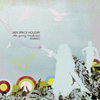 This collection of reworked versions of Marc Bianchi's 2003 albumincludes remixes that stay close to his original versions as well asadventurous deconstructions. By keeping the same running order as theoriginal LP, the set is much more listenable than many remix projects,as there is only one version of each track. By selecting a group ofremixers that are likeminded, he has ensured that the album won't straytoo far from various combinations of pop music and electronica. Thisworks to the advantage and disadvantage of the set. The Album Leaf doesaway with the chaotic beat programming of "The Young Machines" andinstead offers a pleasant, but ultimately uneventful melodic electronicversion. Arab Strap's take on "Something To Do With My Hands" is thebest example of a new version that keeps the structure of the originalsong intact, while improving upon its arrangement. The beat they haveused in place of the original's is simply much better, placing the songin a more contemporary setting. Interestingly, Arab Strap vocalistAidan Moffat has resisted the temptation to add his own vocals to thisremix, as he has done to others in the past. The Stereolab version of"Girl Problem" is the most deconstructed, recontextualized track of theset. It's hard to tell if they've used any sounds from the originaltrack at all. They have added what sounds like organ, drums, and allmanner of strange analog keyboard sounds, and in the process have madea better track than anything on their own last few albums. Thejuxtaposition of Bianchi's lyrics "I've got a girl problem; I've got adrug problem..." against this absurdist backdrop of bleeps and organbursts goes miles toward downplaying his often overly emotionalleanings. Super Furry Animals take on "Sleepy California" is a case inwhich a similar juxtaposition is less successful, as they have setdepressing lyrics about a dying grandmother to silly, bouncy music. Sixof the ten remixers have kept the original's vocals intact,highlighting the importance of storytelling in Her Space Holiday songs.To their credit, none of the remixers have used repeated vocalfragments, which are often annoying. Matmos and Blockhead havecompletely removed the vocals from their respective remixes of "TechRomance" and "Meet The Pressure." They both offer excellent, highlydeconstructed pieces based on a few elements from the original. Thebeautiful, weepy strings which Matmos have used as a key element intheir instrumental version of "Tech Romance" prove that Bianchi doesn'talways need to rely on direct lyrics to strike an emotional chord inhis listeners. While it may have been interesting to hear a few actsless familiar than these pop/electronica sympathizers try to remixtracks, it may have disrupted the flow of the album. By choosing areliable, if slightly conservative, group of remixers, this album hasturned out to be a highly enjoyable companion piece to The Young Machines.
This collection of reworked versions of Marc Bianchi's 2003 albumincludes remixes that stay close to his original versions as well asadventurous deconstructions. By keeping the same running order as theoriginal LP, the set is much more listenable than many remix projects,as there is only one version of each track. By selecting a group ofremixers that are likeminded, he has ensured that the album won't straytoo far from various combinations of pop music and electronica. Thisworks to the advantage and disadvantage of the set. The Album Leaf doesaway with the chaotic beat programming of "The Young Machines" andinstead offers a pleasant, but ultimately uneventful melodic electronicversion. Arab Strap's take on "Something To Do With My Hands" is thebest example of a new version that keeps the structure of the originalsong intact, while improving upon its arrangement. The beat they haveused in place of the original's is simply much better, placing the songin a more contemporary setting. Interestingly, Arab Strap vocalistAidan Moffat has resisted the temptation to add his own vocals to thisremix, as he has done to others in the past. The Stereolab version of"Girl Problem" is the most deconstructed, recontextualized track of theset. It's hard to tell if they've used any sounds from the originaltrack at all. They have added what sounds like organ, drums, and allmanner of strange analog keyboard sounds, and in the process have madea better track than anything on their own last few albums. Thejuxtaposition of Bianchi's lyrics "I've got a girl problem; I've got adrug problem..." against this absurdist backdrop of bleeps and organbursts goes miles toward downplaying his often overly emotionalleanings. Super Furry Animals take on "Sleepy California" is a case inwhich a similar juxtaposition is less successful, as they have setdepressing lyrics about a dying grandmother to silly, bouncy music. Sixof the ten remixers have kept the original's vocals intact,highlighting the importance of storytelling in Her Space Holiday songs.To their credit, none of the remixers have used repeated vocalfragments, which are often annoying. Matmos and Blockhead havecompletely removed the vocals from their respective remixes of "TechRomance" and "Meet The Pressure." They both offer excellent, highlydeconstructed pieces based on a few elements from the original. Thebeautiful, weepy strings which Matmos have used as a key element intheir instrumental version of "Tech Romance" prove that Bianchi doesn'talways need to rely on direct lyrics to strike an emotional chord inhis listeners. While it may have been interesting to hear a few actsless familiar than these pop/electronica sympathizers try to remixtracks, it may have disrupted the flow of the album. By choosing areliable, if slightly conservative, group of remixers, this album hasturned out to be a highly enjoyable companion piece to The Young Machines. Schumacher is an artist for whom the passage between sound installation, performance pieces, and isolated recorded works has been an increasingly fluid process. His first release since last year's lauded Room Pieces, Stories covers much of the same thematic ground, confusing concepts of atmospheric, incidental sound "events" with the markers of a scripted, real-time performance. Here, Schumacher's interest is an exploration of the narrative urges latent in musical composition and the expansion of these urges, as both the context in which a piece emerges, and the way a piece is constructed, are shown to be fragmented, multifarious.
Schumacher is an artist for whom the passage between sound installation, performance pieces, and isolated recorded works has been an increasingly fluid process. His first release since last year's lauded Room Pieces, Stories covers much of the same thematic ground, confusing concepts of atmospheric, incidental sound "events" with the markers of a scripted, real-time performance. Here, Schumacher's interest is an exploration of the narrative urges latent in musical composition and the expansion of these urges, as both the context in which a piece emerges, and the way a piece is constructed, are shown to be fragmented, multifarious. It's pretty much impossible these days to spit in any direction at aNorth American metal/hardcore festival and miss some band for whom AtThe Gates' Slaughter of the Soul forms the backbone of their sound.While a well-intentioned and, while being disturbingly over-rated,solid album, most of the unlistenable trash that has been spewed forthas melodic death metal over the past decade can be traced back to thisone blip on the musical landscape. Thankfully, the merry men in Arsishave emerged from four years of relative obscurity in Virginia spentcrafting their debut album and what could easily be considered thefirst melodic death masterpiece of the 21st century. Gone are theclich? that have plagued all but a handful of bands, for they have beenreplaced by this amazing razor sharp, ultra catchy, simply wonderfulcollection of tunes that will have even the most modest of peoplelonging to grow their hair out, throw up the horns, and have a greattime trying to keep up. Setting the pace right out of the gate with theferocious "The Face of My Innocence," it becomes immediately clear thatthis isn't your older brother's death metal, but something completelyoriginal and without equal on the modern metal landscape. There is notone single recycled riff, not one slightly uninteresting passage, notone second where you might doubt that you are hearing something thathasn't been done before with this type of precision and raw power. Theyeven manage to make the usually snore-inducing verse-chorus-verse songstructure work on "Maddening Disdain" with Malone tapping out a playfulmelody over drummer Michael VanDyne's ever-steady double bassonslaught. A true original toeing the line between vicious andmischievous with an authoritative expertise that concedes to neither,"A Celebration of Guilt" truly is the definition of essential.
It's pretty much impossible these days to spit in any direction at aNorth American metal/hardcore festival and miss some band for whom AtThe Gates' Slaughter of the Soul forms the backbone of their sound.While a well-intentioned and, while being disturbingly over-rated,solid album, most of the unlistenable trash that has been spewed forthas melodic death metal over the past decade can be traced back to thisone blip on the musical landscape. Thankfully, the merry men in Arsishave emerged from four years of relative obscurity in Virginia spentcrafting their debut album and what could easily be considered thefirst melodic death masterpiece of the 21st century. Gone are theclich? that have plagued all but a handful of bands, for they have beenreplaced by this amazing razor sharp, ultra catchy, simply wonderfulcollection of tunes that will have even the most modest of peoplelonging to grow their hair out, throw up the horns, and have a greattime trying to keep up. Setting the pace right out of the gate with theferocious "The Face of My Innocence," it becomes immediately clear thatthis isn't your older brother's death metal, but something completelyoriginal and without equal on the modern metal landscape. There is notone single recycled riff, not one slightly uninteresting passage, notone second where you might doubt that you are hearing something thathasn't been done before with this type of precision and raw power. Theyeven manage to make the usually snore-inducing verse-chorus-verse songstructure work on "Maddening Disdain" with Malone tapping out a playfulmelody over drummer Michael VanDyne's ever-steady double bassonslaught. A true original toeing the line between vicious andmischievous with an authoritative expertise that concedes to neither,"A Celebration of Guilt" truly is the definition of essential.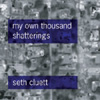 The title comes from poet and mescaline-prophet Henri Michaux; it is his vision of standing in a rainstorm, its persistent torrents, rather than enacting cleansing or comfort, are instead divisive, penetrating the body towards a thunderous disintegration. "I was, and was not, I was caught yet I was lost, I was in a state of complete ubiquity. The thousands upon thousands of rustlings were my own thousand shatterings." Three recordings make up sound artist Seth Cluett's own homage to rain, one a field recording taken during a storm, the preceding two consecutive reworkings of the resulting master tape. Cluett presents the three parts in "reverse" order: the first was created last as a reinterpretation or a remembering of the second, which was performed as a live manipulation of the original tape, a performance guided by the artist's recollections of the experience of recording the source material, presented unchanged in the third section.
The title comes from poet and mescaline-prophet Henri Michaux; it is his vision of standing in a rainstorm, its persistent torrents, rather than enacting cleansing or comfort, are instead divisive, penetrating the body towards a thunderous disintegration. "I was, and was not, I was caught yet I was lost, I was in a state of complete ubiquity. The thousands upon thousands of rustlings were my own thousand shatterings." Three recordings make up sound artist Seth Cluett's own homage to rain, one a field recording taken during a storm, the preceding two consecutive reworkings of the resulting master tape. Cluett presents the three parts in "reverse" order: the first was created last as a reinterpretation or a remembering of the second, which was performed as a live manipulation of the original tape, a performance guided by the artist's recollections of the experience of recording the source material, presented unchanged in the third section. The year 2004 might be remembered as the Year of Arthur Russell. Although the artist died of AIDS more than a decade ago, leaving behind a large and varied body of work, he lived and died in an unintelligible fog of near-total obscurity. Kicked off by The World of Arthur Russell, the Soul Jazz label's compilation of the artist's crucial disco productions, the year also saw the release of Calling Out of Context, the debut release for Audika Records, a label devoted to releasing Arthur Russell's works for posterity.
The year 2004 might be remembered as the Year of Arthur Russell. Although the artist died of AIDS more than a decade ago, leaving behind a large and varied body of work, he lived and died in an unintelligible fog of near-total obscurity. Kicked off by The World of Arthur Russell, the Soul Jazz label's compilation of the artist's crucial disco productions, the year also saw the release of Calling Out of Context, the debut release for Audika Records, a label devoted to releasing Arthur Russell's works for posterity. This album is a fine addition to the Hymen catalog. As the labeldoesn't issue new albums all the time, it is obvious that they areselective with regards to what they release. Having a high level ofstandards has paid off with Scatterheart,Benny Boysen's second release as Hecq. His sense of dynamics is a keyelement to his music's success. During "Doraccle" the shifts betweenloud and quiet are extreme, and help to sustain a level of tensionwithin the music. At 61 minutes the album is long, but the variety ofsounds and textures keeps the set interesting. The way Egyptianpercussion and pizzicato strings are used on "Flood Me" make it ahighlight of the album. His use of these unusual textures shows thathis influences are more varied than those of many electronic producers.Although Boysen is technically proficient at programming intricatebeats, he doesn't let the process become the focus of the music.Instead the set retains an emotional feel, although it often soundscold and mechanical. There is always an underlying drone or atmospherictexture that keeps the tracks grounded in human emotion. The openingtrack "FDK" begins with over a minute of droning, whirling tones beforethe beat kicks in. From this point on, the percussive patterns arejuxtaposed with the atmospheric elements. By focusing on one element orthe other, there is the possibility to listen with a different focuseach time. The inclusion of several short interludes consisting ofsampled dialogue also helps the set to retain a human quality. Thisseems to be a direct reference to the "skits" often featured betweenthe songs on hip hop albums. While many electronic acts talk of theinfluence hip hop has had on their work, Boysen has addressed thissubtly within the configuration of the album itself. The fact that thedialogue is from films also emphasizes Scatterheart's cinematicquality. Although there is a great amount of variance of sounds betweenthese tracks, they work well together as a whole and flow well into oneanother. Although there are many short tracks among the 23 featured,each seems to last long enough to effectively present an idea, withoutsounding unfinished. The running order is well organized, with "TBE,"the loudest, most chaotic track, placed at the halfway point. Thisshort track's noisy barrage of percussion balances the set perfectly.It's refreshing to find that although there are so many peopleproducing instrumental electronic music today, there is still thepossibility to create an album as fresh sounding as Scatterheart.
This album is a fine addition to the Hymen catalog. As the labeldoesn't issue new albums all the time, it is obvious that they areselective with regards to what they release. Having a high level ofstandards has paid off with Scatterheart,Benny Boysen's second release as Hecq. His sense of dynamics is a keyelement to his music's success. During "Doraccle" the shifts betweenloud and quiet are extreme, and help to sustain a level of tensionwithin the music. At 61 minutes the album is long, but the variety ofsounds and textures keeps the set interesting. The way Egyptianpercussion and pizzicato strings are used on "Flood Me" make it ahighlight of the album. His use of these unusual textures shows thathis influences are more varied than those of many electronic producers.Although Boysen is technically proficient at programming intricatebeats, he doesn't let the process become the focus of the music.Instead the set retains an emotional feel, although it often soundscold and mechanical. There is always an underlying drone or atmospherictexture that keeps the tracks grounded in human emotion. The openingtrack "FDK" begins with over a minute of droning, whirling tones beforethe beat kicks in. From this point on, the percussive patterns arejuxtaposed with the atmospheric elements. By focusing on one element orthe other, there is the possibility to listen with a different focuseach time. The inclusion of several short interludes consisting ofsampled dialogue also helps the set to retain a human quality. Thisseems to be a direct reference to the "skits" often featured betweenthe songs on hip hop albums. While many electronic acts talk of theinfluence hip hop has had on their work, Boysen has addressed thissubtly within the configuration of the album itself. The fact that thedialogue is from films also emphasizes Scatterheart's cinematicquality. Although there is a great amount of variance of sounds betweenthese tracks, they work well together as a whole and flow well into oneanother. Although there are many short tracks among the 23 featured,each seems to last long enough to effectively present an idea, withoutsounding unfinished. The running order is well organized, with "TBE,"the loudest, most chaotic track, placed at the halfway point. Thisshort track's noisy barrage of percussion balances the set perfectly.It's refreshing to find that although there are so many peopleproducing instrumental electronic music today, there is still thepossibility to create an album as fresh sounding as Scatterheart.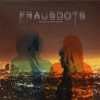 When I first looked at the cover of this CD and the title, my immediatethought was "Please kill me at this very moment and save me from themusic inside, as it's bound to be incredibly pretentious LA glam popwith a European slant, and I can't stand any more of that. Thank you,whoever hears." I'm glad to say I wasn't entirely right, but there areelements of truth to it, and therefore the record surprised me, thoughultimately I did not like it much. Brent Rademaker (Further/BeachwoodSparks) and Michelle Loiselle have a clear knack for pop songs andmelodies, but they seem rather big on glitz and appearance as the linernotes show. This can be an indication of a band without much substance,and the beginning of the record almost reflects that. "Dead Wrong"opens with a slight rephrasing of "Horse With No Name" in a faux GaryNuman delivery. Then, something shocking happens, as the verse hashorrible lyrics, but the chorus takes orbit and firmly finds its placeamong the stars ("Now everybody's doing everybody wrong, andeverybody's singing everybody else's song"). So, in a way, it's anironic parody that opens the record, and that's a bit acceptable, butthe lyrics are still lackluster, and the overall aesthetic seemsborrowed, as well. Plus, the song goes on 45 seconds longer than itshould, into a "doo doo doo" breakdown that is more doo doo. Still, theconcept delivers a benefit of doubt response, and a hope that othersongs will improve it. Sadly, no. "Fashion Death Trends" is where thealbum gets its insidious title, and seems to be about changingattitudes with clothes, and has lyrics in places like "Hello HelloHello" and "Goodbye Goodbye Goodbye." Other songs have promise, withbetter lyrics and more variation, like "The Extremists" and "SoftLight." Then "A Go-see" comes and destroys the momentum. Basically, itdoesn't get anywhere, and it does it real quick. It's derivative, butit has promise; so that's at least one positive thing.
When I first looked at the cover of this CD and the title, my immediatethought was "Please kill me at this very moment and save me from themusic inside, as it's bound to be incredibly pretentious LA glam popwith a European slant, and I can't stand any more of that. Thank you,whoever hears." I'm glad to say I wasn't entirely right, but there areelements of truth to it, and therefore the record surprised me, thoughultimately I did not like it much. Brent Rademaker (Further/BeachwoodSparks) and Michelle Loiselle have a clear knack for pop songs andmelodies, but they seem rather big on glitz and appearance as the linernotes show. This can be an indication of a band without much substance,and the beginning of the record almost reflects that. "Dead Wrong"opens with a slight rephrasing of "Horse With No Name" in a faux GaryNuman delivery. Then, something shocking happens, as the verse hashorrible lyrics, but the chorus takes orbit and firmly finds its placeamong the stars ("Now everybody's doing everybody wrong, andeverybody's singing everybody else's song"). So, in a way, it's anironic parody that opens the record, and that's a bit acceptable, butthe lyrics are still lackluster, and the overall aesthetic seemsborrowed, as well. Plus, the song goes on 45 seconds longer than itshould, into a "doo doo doo" breakdown that is more doo doo. Still, theconcept delivers a benefit of doubt response, and a hope that othersongs will improve it. Sadly, no. "Fashion Death Trends" is where thealbum gets its insidious title, and seems to be about changingattitudes with clothes, and has lyrics in places like "Hello HelloHello" and "Goodbye Goodbye Goodbye." Other songs have promise, withbetter lyrics and more variation, like "The Extremists" and "SoftLight." Then "A Go-see" comes and destroys the momentum. Basically, itdoesn't get anywhere, and it does it real quick. It's derivative, butit has promise; so that's at least one positive thing.
